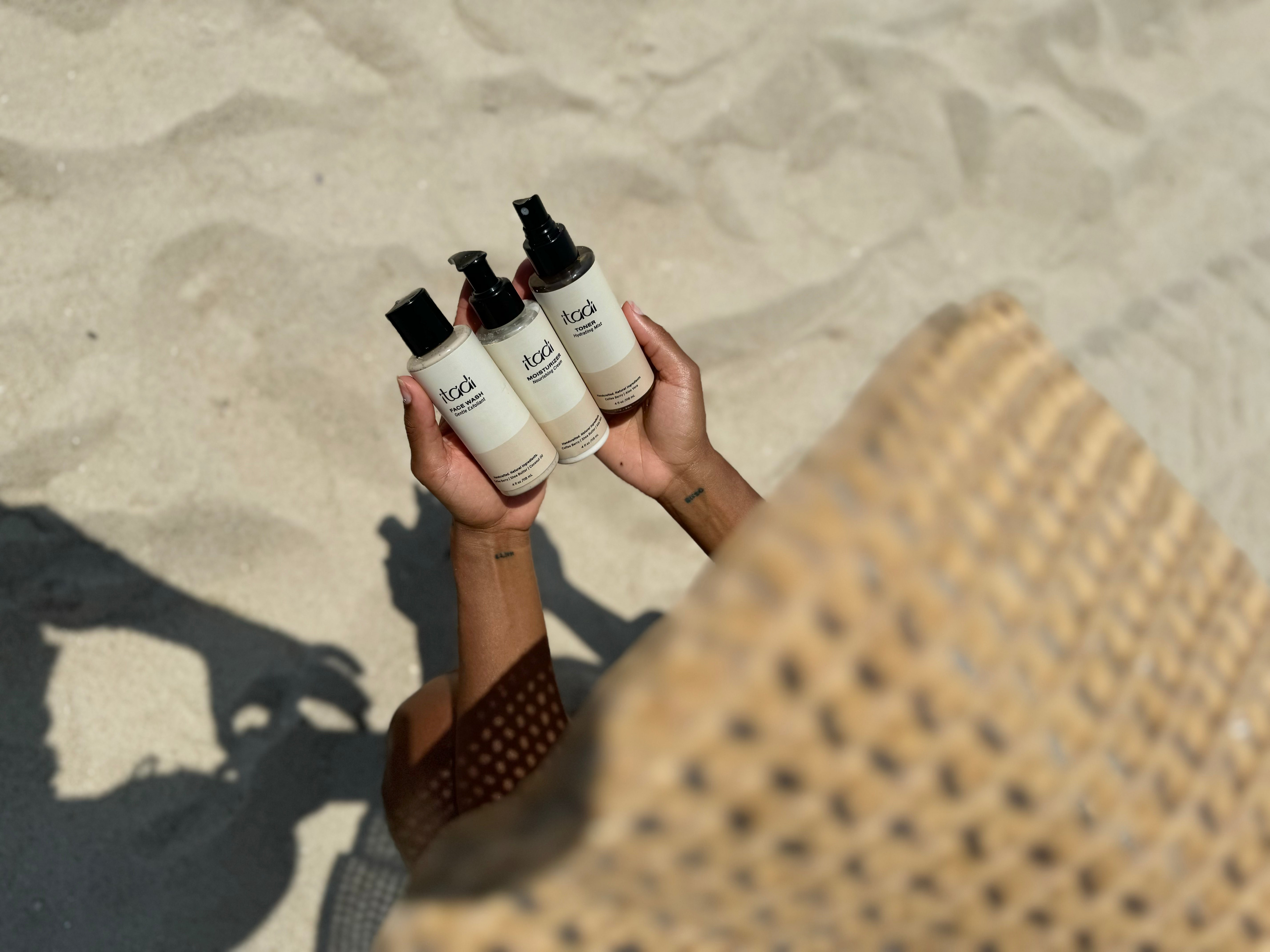Welcome to the Itadi Body blog! For a beginner, the difference between a serum and a moisturizer can be confusing. They both hydrate and nourish, so do you really need both? The simple answer is yes, and understanding their distinct roles is the key to a truly effective skincare routine. Think of them as two different tools for two different jobs.
The Core Difference: Function and Penetration
The main difference between a serum and a moisturizer lies in their function and how deeply they penetrate the skin.
|
Product
|
Primary Function
|
Consistency & Molecule Size
|
When to Use
|
|
Serum
|
Targeted Treatment. Delivers high concentrations of active ingredients deep into the skin to correct specific concerns.
|
Thin, lightweight, and fast-absorbing with smaller molecules [1].
|
After cleansing/toning, before moisturizer.
|
|
Moisturizer
|
Hydration & Protection. Creates a physical barrier on the skin's surface to lock in moisture and prevent water loss.
|
Thicker, creamier, or oil-based with larger molecules [1].
|
As the final step in your routine (before sunscreen in the AM).
|
Deep Dive: What Each Product Does
The Serum: The Specialist
Serums are your skincare specialists. They are packed with potent ingredients designed to address a single, specific issue. Because their molecules are smaller, they can penetrate deeper into the skin's layers to deliver a concentrated dose of actives where they are needed most [1].
Common Serums and What They Target:
•Vitamin C: Brightening, antioxidant protection, and collagen boosting.
•Hyaluronic Acid: Intense hydration and plumping.
•Retinoids (Retinol): Anti-aging, smoothing fine lines, and treating acne.
•Niacinamide: Calming redness, reducing pore appearance, and balancing oil.
The Moisturizer: The Barrier Builder
The moisturizer is your skin's protector and sealant. Its primary job is to support the skin barrier, which is the outermost layer of your skin that keeps the good stuff (hydration) in and the bad stuff (pollutants, irritants) out [1]. Moisturizers contain ingredients like ceramides and oils that form a protective layer on the surface.
Key Ingredients in Moisturizers:
•Humectants: Draw water into the skin (e.g., Hyaluronic Acid, Glycerin).
•Emollients: Soften and smooth the skin (e.g., oils, fatty acids).
•Occlusives: Form a physical barrier to prevent water loss (e.g., Shea Butter, Petrolatum).
The Correct Order: Serum First, Then Moisturizer
The rule of thumb for layering skincare is to apply products from thinnest to thickest consistency.
1.Serum First: Since it's the thinnest and contains the active ingredients you want to penetrate the deepest, the serum goes on first.
2.Moisturizer Second: The thicker moisturizer is applied last to create a seal, locking the serum's active ingredients into your skin and preventing the moisture from evaporating [1].
Pro Tip: Wait about 30 to 60 seconds after applying your serum before moving on to your moisturizer. This allows the serum to fully absorb and settle before you seal it in.
The Takeaway
You need both a serum and a moisturizer for a complete routine. The serum treats your specific concerns with high-potency actives, and the moisturizer protects and seals in the benefits. Use them together, and you'll maximize the health and radiance of your skin.



0 comments